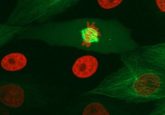ZFDesign: the new gene-ius AI gene-editing tool

Recently developed artificial intelligence program ZFDesign overcomes traditional challenges associated with zinc-finger editing, giving it the potential to overtake alternative gene-editing techniques such as CRISPR.
In a recent study, a team of researchers at the University of Toronto (Canada) and NYU Grossman School of Medicine (NY, USA) designed a novel artificial intelligence program that may, for the first time, allow the hassle-free assembly of target-specific zinc finger (ZF) proteins. Using artificial intelligence to analyze ZF interaction data, the researchers were able to generate a model (ZFDesign) that designs and mimics these interactions to create compatible ZFs. This revolution has particularly promising applications in the gene therapy field.
Nearly all conditions and diseases have a genetic element. It is estimated that 1 in 50 individuals are affected by single-gene disorders, for example cystic fibrosis, Huntington’s disease and sickle cell anemia. Many people also suffer from epigenetic diseases: those that are caused by changes in how the DNA is read rather than the sequence itself, including neurological and autoimmune disorders, like Fragile X syndrome, as well as several types of cancer. These disease types can be treated using gene therapy, whereby genetic modification corrects the underlying issue. This is where gene editing techniques such as ZF editing come in.
ZF editing is a technique used to make specific modifications to genomes. It involves a group of DNA-binding proteins termed zinc-finger nucleases (ZFN) that can bind and edit the genome at specific locations, through generating site-specific DNA double-stranded breaks. ZF domains, subunits of ZFNs, can be engineered to bind to specific DNA sequences, in order to direct ZFNs to the target site. This leads to targeted mutations and gene replacements. ZFs can also be designed for epigenetic editing by binding to transcription factors (TFs) and altering their activity, or by making epigenetic modifications directly.
Currently, the main drawback of this technology is the extremely high error rate due to off-target mutations and cleavages. Each ZF can typically only recognize 3 base pairs of DNA, meaning multiple ZF motifs must be used to create a ZFN that recognizes a longer stretch of nucleotides. Unfortunately, this leads to variation in sequence recognition due to interactions with neighboring ZFs. Consequently, ZF engineering is a rather painstakingly frustrating process, as it is difficult to ascertain which ZF combinations are compatible together whilst also retaining sufficient specificity and efficiency.
ZFDesign overcomes these problems by using AI to model and stimulate different ZF interactions. The deep-learning design model was generated from screening almost 50 billion possible ZF-DNA interactions in the researchers’ labs, which were then used to design ZFs with activator, repressor and nuclease activity through reprogramming different TFs. The team tested the applications and adaptability of this technology in human cells, by repeatedly assembling ZF arrays that bound to a broad range of targets with high efficacy.
“Our program can identify the right grouping of zinc fingers for any modification, making this type of gene editing faster than ever before,” explained David Ichikawa, lead study author and graduate of NYU Langone Health (NY, USA).
The research applications are enormous. Not only does the technology have the ability to modify both the genome and the epigenome through reprogramming TFs, but it is the first time that ZF proteins can be created for any target sequence with the click of a button (literally), greatly speeding up the process of ZF design.
Additionally, ZF editing poses significant advantages over its rivals due to its smaller size and low immunogenicity: alternative gene editing techniques such as CRISPR-Cas and transcription activator-like effector nucleases (TALENs) contain larger proteins. Additionally, the bacterial Cas9 protein in CRISPR-Cas poses an immunogenic risk, leading to delivery and side effect complications. Since many human TFs use ZFs naturally found in the body to bind DNA, modifying ZFs to manipulate binding avoids the use of foreign binding motifs, meaning ZF editing may be a safer and more flexible therapeutic alternative than CRISPR-Cas.
However, the researchers caution against design limitations. The study results indicated some off-target binding despite the high specificity profiles of each designed ZF. This is likely due to the nature of TF binding within the body, as each individual TF can bind to hundreds of DNA sites.
Consequently, the team plan to make improvements to their AI program by screening more ZF arrays and applying specific binding rules, so that ZFs can make more precise gene modifications.
Nevertheless, ZFDesign could become ground-breaking. In the future, ZF proteins may be able to regulate multiple genes at once, helping to treat patients with multifactorial diseases, such as heart disease or type 2 diabetes. Perhaps this technology will allow some gene therapies to become as easy as A-T-C, for now we will have to wait and see.





